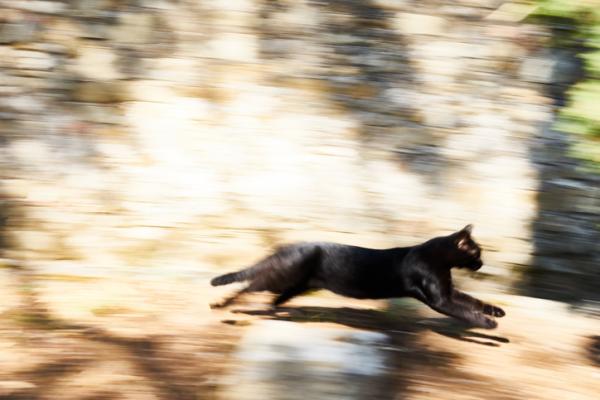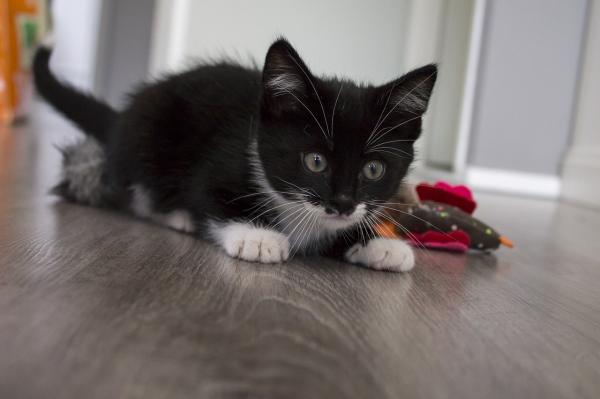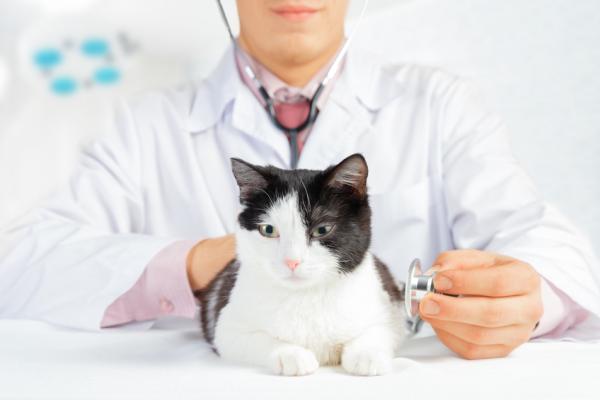How to calm a hyperactive cat?

In spite of the time of coexistence between human beings and cats, we are still surprised by aspects of their behavior. Therefore, in this article we will pay attention to how to recognize and calm a hyperactive cat.
First we will define the behavior we are going to refer to, then explain what guidelines we can follow to help and understand our cat and, above all, we will differentiate the normal behavior of a healthy cat from that which may require consultation with a cat. professional. Discover below how to calm a hyperactive cat as well as other basic tips for your wellbeing:
The cat activity
First of all, it is essential to know what is the habitual behavior of cats to know in which cases their activity can be understood as pathological and when, on the contrary, it is the usual activity of an individual of its characteristics. For this it is important to know that the activity of the cat will be related to their age.
Thus, as a puppy it will be easy to observe him playing with any object that could be caught, bitten or beaten. It is also not unusual for you to run or jump at great speeds, climb to considerable heights or even climb the wall. This intense activity is completely normal in a kitten and it is a sign of your health. It is at this stage that we must lay the foundations of the “safe” game, that is, diverting your attention if you intend to play biting our fingers or catching our feet and offering an adequate range of toys. Only implanting this measure can help to calm a hyperactive cat, as we will see.
No need to buy sophisticated mechanisms. A ball of aluminum foil or a flashlight to light against a wall can ensure hours of entertainment. Likewise, it is very important to offer a safe environment, taking into account his taste for heights and his ability to hide in the most unsuspecting and recondite places. Therefore, we must examine our home with “cat eyes” to eliminate any danger or reduce it, as, for example, by using nets for windows and balconies.
Once the first years of life are over, we will observe that, in a good number of cats, the unbridled activity and the hours of play decrease, although this aspect will also depend on the character of the cat, which will be more or less playful and active.
Towards the end of his life, generally around the age of ten, we will observe that the cat spends almost all of its time sleeping and resting, leaving the game relegated to very specific moments. All cats, even older ones, pass with more or less frequency by what we could call the “feline crazy hour”, easily recognizable because the cat, suddenly and without need of real stimulus, adopts an attack posture, with the hair of the back bristling and walking sideways, by leaps.
They usually run away running in a direction that only they know. After a few minutes of crazy career They return to a state of calm as if nothing had happened. This situation is completely normal and does not suppose any cause of alarm due to hyperactivity, so that the activity, although high, of the kittens should not cause concern either.

When hyperactivity is a problem
When it affects the cat’s normal life and causes anxiety or stress it is time to look Professional Help. They would be restless cats, that can not be still and even mew in excess or cause damage to the furniture due to their constant activity.
The first, as always, is to rule out a pathology of physical origin, that is to say, it is necessary to go to the veterinarian for a revision, especially if the hyperactivity arises suddenly, having been the calm cat until the moment, and it is accompanied of loss of weight although it increases the ingestion of water and food.
It is known that disorders of the thyroid gland (hyperthyroidism) can cause an exaggerated activity, so that the cat has difficulties to remain still. The diagnosis is made by palpation of the gland in the neck (it will be enlarged) and / or by measuring the thyroid hormones through a blood test.
Measures to help
While we wait for professional advice from a ethologist, if necessary, we can implement the following measures in order to channel the energy and thus calm our hyperactive cat:
- Enrichment of the environment: we can prepare our house so that it becomes a challenge for our cat, including toys in which he will have to hunt his food. Scrapers of various heights, hammocks, shelves, catnip or even, if possible, access to a controlled and safe outside, can redirect the hyperactivity of our cat.
- Know how to stop and say “no” when, for example, your activity is harmful to us, in the form of scratches or bites. In these cases, we should not quarrel or, much less, hit the cat, we just have to redirect your activity towards another object. In this sense it is also important that we learn to recognize the signs that our cat is upset with our contact or wants to finish the game. Insisting can provoke his abrupt reaction. On the other hand, soothing caress sessions can be a good painkiller for some hyperactive cats, taking the precaution of stopping if we feel that they are overstimulating.
- The dilemma of another animal at home so they can be company. Sometimes, it is very beneficial for a cat to have the company of another specimen of its kind or even that of a dog. And, although it is true that the game between them can help a hyperactive cat, we can see ourselves, in reality, with two problems instead of one. Before making this important decision, it is necessary to know that not all cats tolerate the company and that it is normal that a more or less long time of adaptation between both is needed. It is basic that cats have the same energy to not aggravate the problem.
- Bach flowers, could be tested in these cases according to the guidelines set by the specialized veterinarian or the floral therapist, always after a review of the cat.
- Specific feed and prizes, since there are products on the market that contain soothing substances that can help relax our hyperactive cat.
- Pheromones, which are substances that cats secrete naturally and are reassuring. They therefore exert a calming effect in the cases in which they are prescribed. They can be sprayed or used as a diffuser.
- Medication, if we are facing a very serious case it is possible to use drugs such as anxiolytics that always have to be prescribed by a veterinarian.

If you want to read more articles similar to How to calm a hyperactive cat?, we recommend that you enter in our section of extra care.


